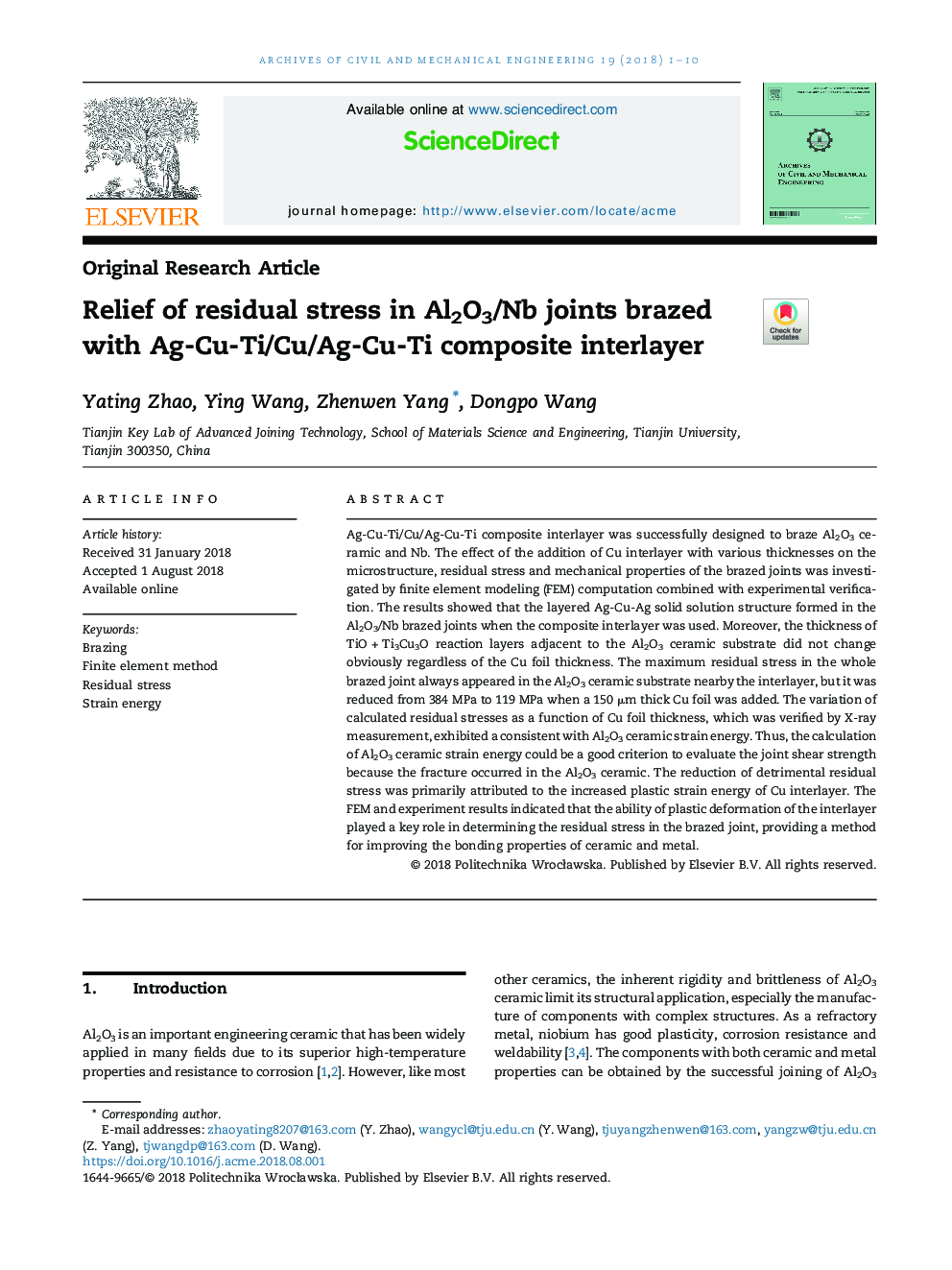| Article ID | Journal | Published Year | Pages | File Type |
|---|---|---|---|---|
| 10150672 | Archives of Civil and Mechanical Engineering | 2019 | 10 Pages |
Abstract
Ag-Cu-Ti/Cu/Ag-Cu-Ti composite interlayer was successfully designed to braze Al2O3 ceramic and Nb. The effect of the addition of Cu interlayer with various thicknesses on the microstructure, residual stress and mechanical properties of the brazed joints was investigated by finite element modeling (FEM) computation combined with experimental verification. The results showed that the layered Ag-Cu-Ag solid solution structure formed in the Al2O3/Nb brazed joints when the composite interlayer was used. Moreover, the thickness of TiOâ+âTi3Cu3O reaction layers adjacent to the Al2O3 ceramic substrate did not change obviously regardless of the Cu foil thickness. The maximum residual stress in the whole brazed joint always appeared in the Al2O3 ceramic substrate nearby the interlayer, but it was reduced from 384âMPa to 119âMPa when a 150âμm thick Cu foil was added. The variation of calculated residual stresses as a function of Cu foil thickness, which was verified by X-ray measurement, exhibited a consistent with Al2O3 ceramic strain energy. Thus, the calculation of Al2O3 ceramic strain energy could be a good criterion to evaluate the joint shear strength because the fracture occurred in the Al2O3 ceramic. The reduction of detrimental residual stress was primarily attributed to the increased plastic strain energy of Cu interlayer. The FEM and experiment results indicated that the ability of plastic deformation of the interlayer played a key role in determining the residual stress in the brazed joint, providing a method for improving the bonding properties of ceramic and metal.
Related Topics
Physical Sciences and Engineering
Engineering
Civil and Structural Engineering
Authors
Yating Zhao, Ying Wang, Zhenwen Yang, Dongpo Wang,
